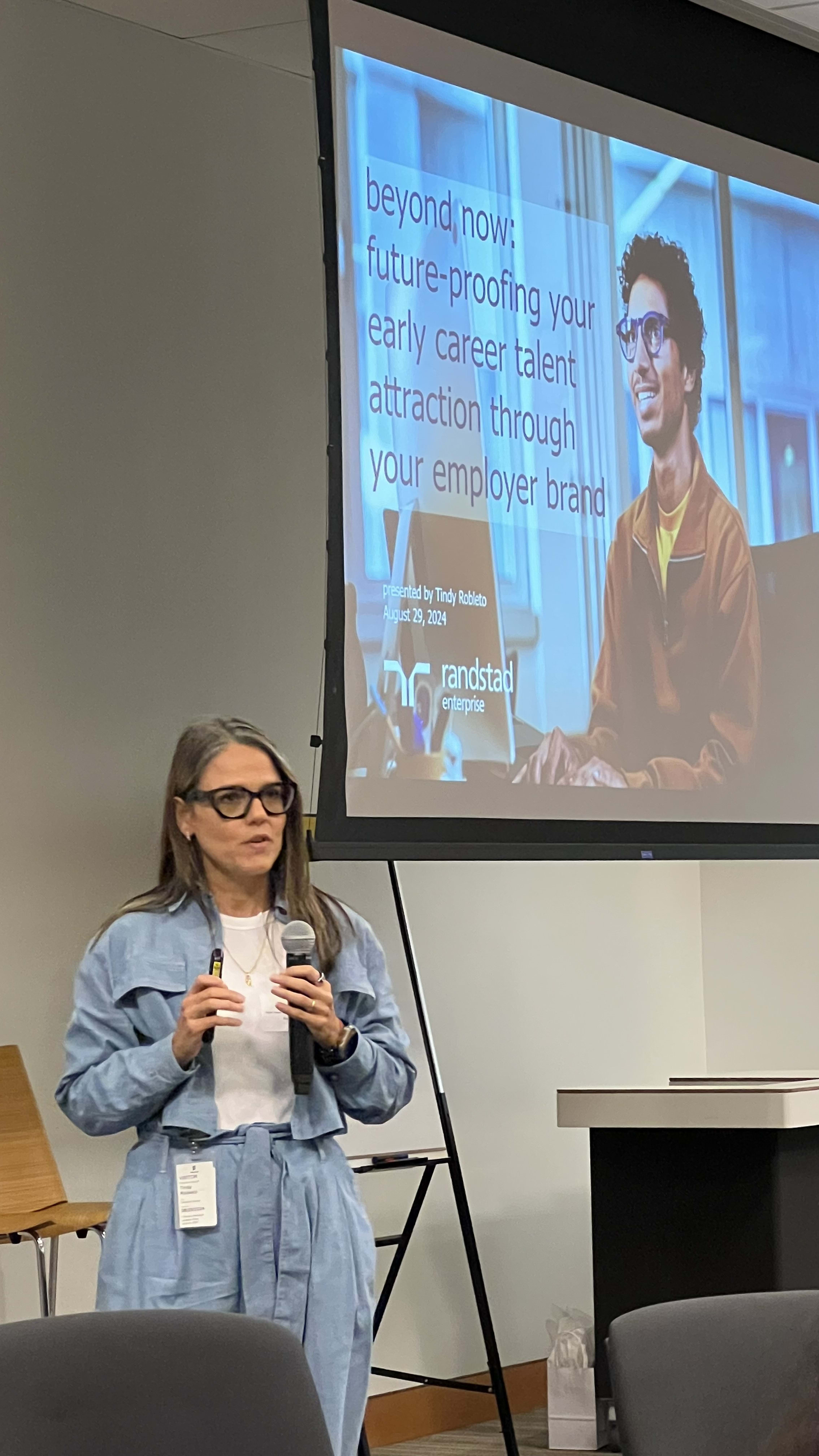the secret to recruiting early careers talent.

3 key learnings from the 2024 Early Careers Summit
With competition for top talent getting more intense, more organizations are seeking to hire promising talent earlier in their careers. By recruiting candidates who are currently attending college for internship roles or entry-level positions, businesses can nurture people from the start, help them gain skills needed for the future and ensure they become valued members of the team.
But before reaping the benefits, you have to figure out the right way to recruit these early career individuals — and keep them retained and engaged — at a time when more businesses are competing for such talent.
To shine some light on how leading companies are successfully recruiting early career talent, Randstad Sourceright recently conducted an Early Careers Summit. Hosted in Plano, Texas in August 2024, the event welcomed talent leaders from a wide range of companies, all with the shared goal of learning how they can take their early careers recruitment to the next level.
3 key learnings

The summit included informative educational sessions, such as a presentation by Kate Beckman, director, Community and Insights for early career recruiting technology provider RippleMatch. Beckman shared data from RippleMatch’s recent surveys of Gen Z job candidates that reveal what they’re looking for when applying to opportunities, and recruiters to showcase the successful strategies they have used to attract and retain early career talent.
Attendees also watched a lively panel discussion, participated in a hands-on workshop and had plenty of networking opportunities, enabling them to learn about and discuss the key challenges and opportunities in acquiring early career talent. Among the many topics addressed, three main themes emerged.
1. meeting candidate expectations

Gen Z candidates want to be communicated with early and often. According to the data from RippleMatch, 37% say they expect to hear back between 5 and 7 business days after applying, while 27% expect a response even sooner. Of course, doing so may not be feasible, which is why AI can be a useful tool to help fill those gaps and create automated responses. Still, it’s important to set expectations from the beginning. Letting candidates know when they can expect to hear about next steps can go a long way in addressing their demand for quick and regular communications.
2. managing too many applications
Part of the challenge in hiring early career talent is that companies are often inundated with applications, making it difficult to sort through this high volume to find top-quality candidates. According to the data, 71% of candidates plan to submit at least 100 applications to land a job or internship offer, including 29% who say they plan to submit more than 300. However, there are ways to shrink the candidate pool, such as limiting the sites job ads are posted to and taking the ads down sooner.
3. addressing DEI
While colleges provide ample opportunity to attract diverse talent and build inclusive workforces, challenges remain. As mentioned above, the high number of applications can make it more difficult to find diverse talent among the many candidates. Technology can help, by targeting the people you want to attract and telling the right story about why they should join, what they can do, and how the company will support their ongoing growth and development. In fact, according to the RippleMatch’s survey, nearly three-quarters (72%) of recruiters say using virtual recruitment to reach more diverse populations is part of their recruiting strategy, with another 13% planning to add this to their strategy.